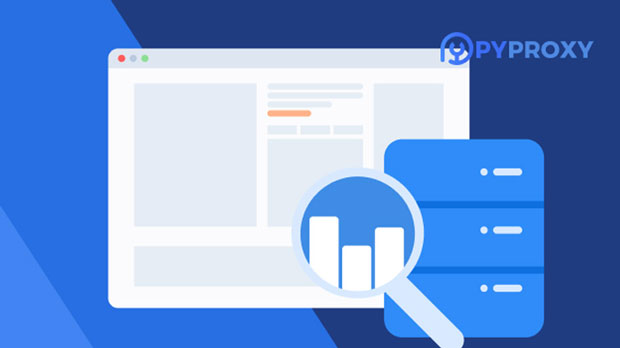In today's digital era, the need for proxies has skyrocketed, with businesses, marketers, and even individual users looking to bypass geo-restrictions, improve privacy, and avoid IP bans. The two primary options available are using proxy generators or building a self-hosted proxy pool. The key question is: which is more cost-effective? While proxy generators are typically more convenient and hassle-free, building a self-hosted proxy pool can offer more control and potentially lower costs in the long run. This article will dive deep into the pros and cons of both methods, helping you determine which one best fits your needs and budget. Understanding Proxy GeneratorsProxy generators are tools or services that automatically generate a pool of proxies for users, usually for specific purposes like web scraping, privacy protection, or accessing geo-restricted content. These generators can be cloud-based or software-driven, offering users an array of rotating IP addresses that they can use for various activities.Pros of Proxy Generators:1. Ease of Use: Proxy generators are usually easy to set up and require minimal technical knowledge. Most services offer user-friendly interfaces, making them accessible even for non-technical users.2. No Maintenance: Since the service provider handles all the technical aspects of proxy generation, you won’t have to worry about maintaining the proxy pool or troubleshooting any technical issues.3. Scalability: Proxy generators can scale with your needs. Whether you need a few proxies or thousands, these services can quickly provide the resources you need.Cons of Proxy Generators:1. Ongoing Subscription Fees: Proxy generators typically charge recurring subscription fees, which can add up over time. For businesses with heavy usage, these costs can become significant.2. Limited Control: Users have limited control over the quality, location, and type of proxies they get, which might not suit highly specific or niche requirements.3. Risk of IP Bans: Some proxy generator services use IP addresses that are already flagged or overused, increasing the risk of getting banned while using these proxies for activities like web scraping.Self-Built Proxy PoolsA self-built proxy pool refers to creating and managing your own collection of proxies, usually by acquiring a range of residential or datacenter IPs, setting up servers, and configuring the necessary systems to rotate and manage them. This method requires more technical knowledge but can offer greater flexibility and control.Pros of Self-Built Proxy Pools:1. Full Control: Building your own proxy pool gives you complete control over the IP addresses, their locations, and the rotation schedule. This ensures that you get proxies that meet your specific needs.2. Lower Long-Term Costs: While the initial setup cost can be high, a self-built proxy pool can be more cost-effective in the long run, especially for businesses that require large volumes of proxies.3. Customization: You can customize your proxy pool based on your needs, such as choosing the types of proxies (residential, mobile, or datacenter) and implementing advanced features like IP rotation and usage limits.Cons of Self-Built Proxy Pools:1. High Initial Setup Costs: The setup costs for a self-built proxy pool can be significant, including expenses for IP addresses, servers, maintenance, and technical expertise.2. Maintenance and Management: Unlike proxy generators, managing a self-built proxy pool requires ongoing maintenance. You will need to regularly monitor and rotate IPs, troubleshoot issues, and ensure that the proxies are working effectively.3. Technical Expertise Required: Building and managing a proxy pool requires a certain level of technical knowledge, making it less ideal for those without IT experience.Cost Comparison: Proxy Generator vs Self-Built Proxy PoolWhen evaluating the cost-effectiveness of proxy generators versus self-built proxy pools, several factors need to be considered, including setup costs, maintenance costs, and long-term scalability.Initial Costs:- Proxy Generators: Proxy generators usually have lower initial costs, often offering flexible subscription plans based on the number of proxies or bandwidth you need. Many services offer pay-as-you-go or tiered pricing structures, which means you only pay for what you use.- Self-Built Proxy Pools: The initial setup costs for a self-built proxy pool are significantly higher. This includes purchasing IPs, renting or buying servers, and possibly hiring IT professionals to configure the system. These upfront costs can be a barrier for small businesses or individuals.Ongoing Costs:- Proxy Generators: With proxy generators, users pay ongoing subscription fees, which can vary depending on the number of proxies, bandwidth, and the service plan. These fees can add up, particularly if you require a large number of proxies for extensive usage.- Self-Built Proxy Pools: The ongoing costs for maintaining a self-built proxy pool are lower compared to subscription-based services. Once the infrastructure is set up, the cost of IPs and server maintenance is typically lower than the ongoing fees for using a proxy generator.Scalability:- Proxy Generators: Proxy generators are highly scalable, making them ideal for users who need to scale up or down depending on their needs. This flexibility is advantageous for businesses that need to quickly adjust their proxy requirements without committing to long-term infrastructure investments.- Self-Built Proxy Pools: While a self-built proxy pool can be scaled, doing so requires more time, effort, and resources. If you need to add more proxies, you'll need to purchase more IPs, expand your server infrastructure, and ensure your system is capable of handling the increased load.Which One is More Cost-Effective?The answer to this question depends on your specific needs, budget, and technical expertise.1. For Smaller Scale or Short-Term Needs: If you need proxies for short-term use or on a smaller scale, proxy generators are likely the more cost-effective choice. The low initial cost, ease of use, and flexibility make them ideal for businesses or individuals who don’t want to invest in the infrastructure or maintenance of a self-built proxy pool. 2. For Long-Term, High-Volume Use: If you're running a business that requires a large number of proxies over the long term, a self-built proxy pool can be more cost-effective in the long run. Although the initial setup costs are higher, the ongoing maintenance costs tend to be lower, and you’ll have greater control over your proxies, reducing the risk of bans and allowing for customization.In conclusion, the decision between using a proxy generator and building a self-hosted proxy pool comes down to your specific needs. Proxy generators offer convenience and scalability with low initial investment, making them ideal for small-scale use or those who don’t want to handle technical aspects. However, for long-term, large-scale needs, a self-built proxy pool can be more cost-effective, offering better control and lower ongoing costs. By carefully considering your requirements and resources, you can determine which option provides the best value for your specific situation.
Apr 22, 2025
![arrow]()



























































